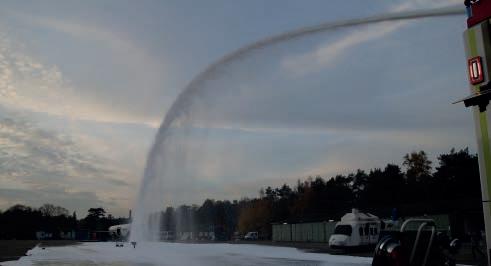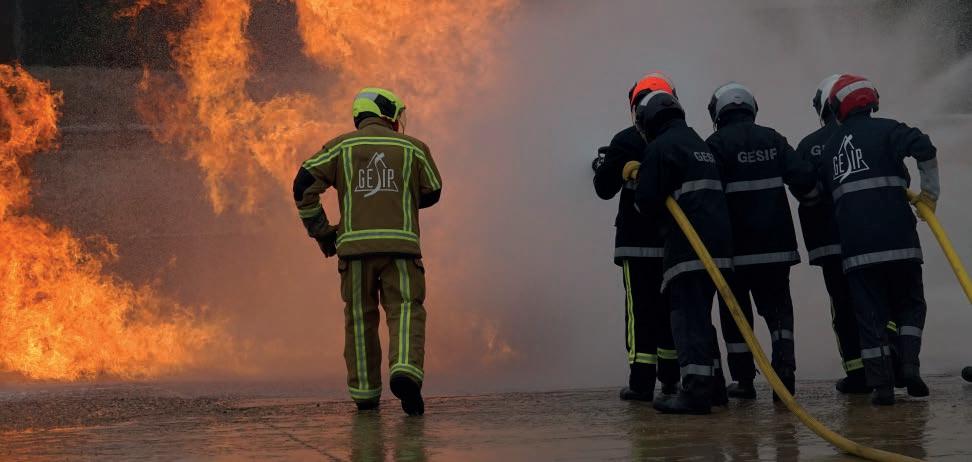
4 minute read
Industrial Fire Brigade – Incident Command
by Catalyst
By: Steve Watkins, Gijsbert van Pinxteren
Imagine, You are sitting behind your desk and you receive a call that there has been a small explosion in one of your gas refining units. You are worried. It is your first major incident and you are responsible for the coordination of the emergency response. The emergency response plan is set in motion. Those plans that you have vetted and sanctioned, the skills of the response staff, your decisions and how you interact with your team are what stands between a disaster averted or losses in life, huge production losses and reputation of your organisation seen by the outside world. Are you up to it? WHAT MAKES YOU A GOOD COMPETENT INCIDENT COMMANDER?
Advertisement
Someone who stays calm, can work under stress and can communicate well to motivate their subordinates are obvious traits. Be how do you come up with the correct decisions? Gary Klein made study back in the 1990’s suggested that the best commander used Recognition Primed Decision Making process to make the quickest decisions based on matching the situation to their experiences in the past. But what if the commander does not have that experience. Incidents in petrochemical plants are rare, which means new commanders may not have been exposed to those decisions. Which poses huge dilemmas. The latest research in leadership and decision making suggests that there are two decision making modes, Type 1 (intuitive) and type 2 (analytical) decision making processes. Type 1 is the above recognition primed decision making and type 2 is a formal process in which analyse is done before the decision is made. Type 2, often termed a Conflict Management Model analyses the information received and then assesses that information in terms of risk and threats to come up with tactical options. Then a process of filtering and elimination gives the option that is most promising. The research concludes that both styles maybe adopted depending on the experience of the commander, information available, time constraints and the situation faced. At the heart of both models is information gathering and situational awareness. Gathering information and sharing can break down within and between teams and other stakeholders, which can undermine situational awareness and coordination leading to poorer incident management. Lacking in information a commander will need to fall back on pre-conceived procedures to stabilise the situation. More information may in the course of time become available which may affect decisions already made. Can you analyse the information and adjust your plan? Decisions need to be made in a timely fashion. i.e. we cannot wait for extra information, we need to act now or the situation is rapidly changing or we need to act now to protect of responders and the public at large. The gut instinct is to isolate and extinguish the fire, however going through a risk and threat analyse might come up with an alternative tactic. I.e. controlled burning which would eliminate a greater risk of toxic non fire threat.
HOW CAN YOU GAIN THIS EXPERIENCE IF YOU ARE NO HAVING INCIDENTS THAT REGULARLY?
The answer is training, simulations that reflect the reality and challenge the commander under stress. Optimising the decision making process based on what you face through those simulations. Coaching the interpersonal soft skills needed to lead and get the most of the team. RelyOn Nutec offers training with personalised mentoring to bridge the gap in skills, rules and knowledge needed for a commander. Our JOIFF accredited Industrial Fire Brigade incident Commander training is designed to help inexperienced commander or aspiring commanders to gain the necessary competencies in incident command. Should the delegate not have a firefighting background, then we offer a short Foundation Course (also online), which aims to bring the delegate up to speed with the basic firefighting techniques and tactics which would be employed in an industrial incident. Experienced commander need not miss out, because we also run an advanced level for those who need to be challenged. Whether you are professional facility firefighters or from the production side of a facility, if you are involved in the management of an incident then this course can be invaluable to you. How to gather information, analyse that information, assess the risks and threats, assess the resource needs, make timely decisions and trick and tips to lead under stress. The delegates has during the training the opportunity to test and develop their skills, in a safe but realistic way. Beside leadership role play and virtual reality exercises, the delegates will be exposed to “live fire exercises” on one of our highly realised industrial process simulators. The simulators look like a miniature refinery units, complete with pressure and flow control rooms, to stimulate the information flow to and from the process operators. Together with role play this gives a totally immersive experience. The delegates will not only be mentored on the decision making processes but also the soft interpersonal skills required for effective leadership. Both delegates will receive verbal feedback during the exercises and a formal written performance assessment necessary to for personal development.









